According to the American Academy of Pediatrics, every child should see a dentist by the time they get their first tooth. The first dental visit should take place no later than the child’s first birthday. Helping your child get into the habit of regular dental visits early in life will set positive dental habits that will extend into adulthood. Routine dental cleanings and exams are necessary to help ensure that your child maintains a healthy mouth and good oral hygiene. Although care at home is also important, professional dental cleanings will help remove plaque build-up that can occur despite the best brushing and flossing methods.
During a routine check-up, the teeth of your child will be polished to remove any plaque build-up or tartar. Your child will be given a fun toothpaste flavor and allowed to watch a kid-friendly movie during the entire cleaning process. Our staff will also spend time going over the dietary needs of your child along with daily brushing and flossing routines. We will also give tips on how to properly brush and floss and what foods are best to eat.
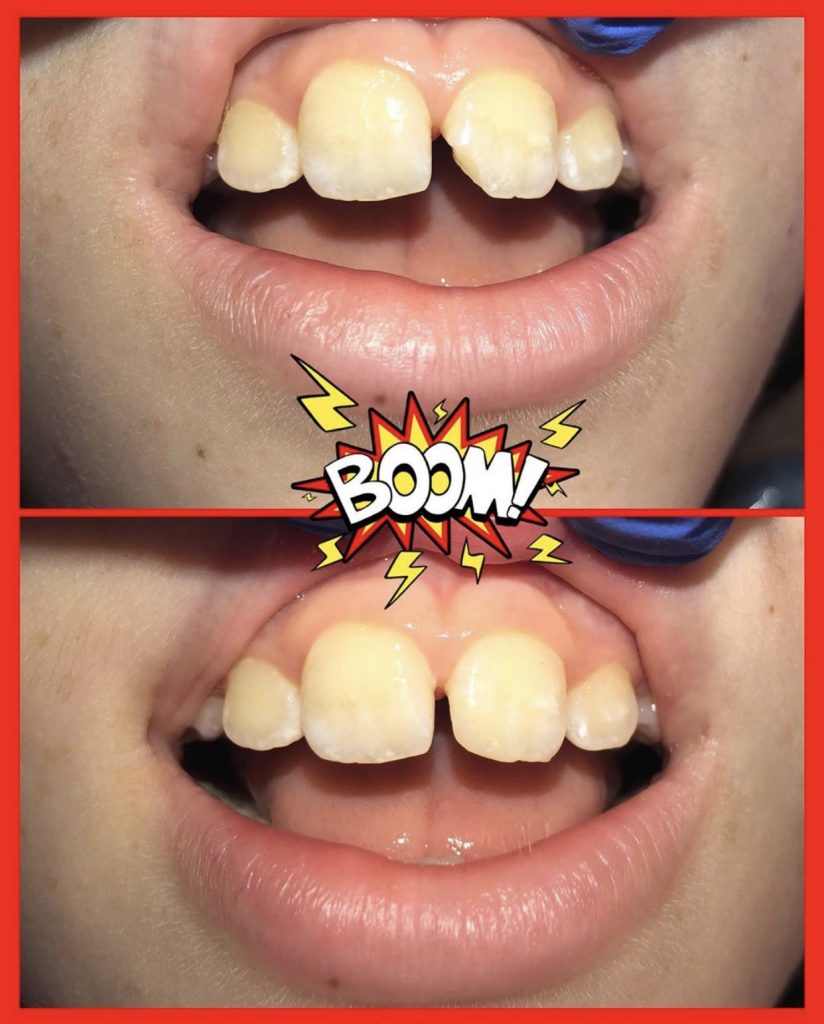
If your child has a toothache, clean the affected area with a toothbrush and toothpaste. Rinse the mouth vigorously with warm water and use dental floss in the surrounding areas. If your child needs a pain reliever, administer Tylenol or Motrin according to the package directions. Do not place aspirin on the tooth itself or on the gums. If the face is swollen, apply cold compresses and contact our office immediately. A swollen face could indicate a serious problem requiring immediate attention.
If your child is experiencing a true dental emergency, Dr. Kimmy can be reached at 516-365-4-KID. We are available to handle emergency situations for our patients 24/7. If your child appears to be suffering from injuries that extend beyond the mouth, call 911 or take your child to the emergency room.
White Fillings
Stainless steel or White Zirconia crowns are sometimes recommended for children following a baby root canal or if a back baby tooth suffers from severe trauma or cavities. Because most baby molars do not fall out until the ages of 10-12, these crowns are recommended when traditional fillings are insufficient to protect the tooth from further damage until it falls out on its own. The differences between stainless steel and white crowns are mostly color preference. The pros and cons of each type of crown will be discussed with you to help you make a good decision for your child.
Crowns
Stainless steel or White Zirconia crowns are sometimes recommended for children following a baby root canal or if a back baby tooth suffers from severe trauma or cavities. Because most baby molars do not fall out until the ages of 10-12, these crowns are recommended when traditional fillings are insufficient to protect the tooth from further damage until it falls out on its own. The differences between stainless steel and white crowns are mostly color preference. The pros and cons of each type of crown will be discussed with you to help you make a good decision for your child.
Baby Root Canal Therapy
Pediatric root canal therapy is designed to maintain the integrity of the affected tooth to prevent premature loss. The early loss of posterior (back) teeth can lead to future problems with the placement and eruption of adult teeth. To avoid the difficulties inherent with crooked or impacted adult teeth, proper root canal treatment is needed to avoid the premature loss of primary molars. Dental caries and traumatic injury are the primary reasons for pulp therapy in children. Due to the loss of tooth structure involved in teeth requiring pediatric root canal therapy, full coverage restoration such as a pediatric crown is necessary.
Extractions
Extractions are commonly performed on pediatric patients to address extensively decayed non-restorable teeth or orthodontic problems. To help make the procedure as comfortable as possible for your child, we may recommend the inhalation of nitrous oxide (laughing gas) and a local anesthetic. If your child is anxious, oral or IV sedation can also be offered in the comfort of our office.
Nitrous Oxide
Nitrous oxide, aka“laughing gas” or “happy air”, is a safe and effective behavior management tool offered at Dr. Kimmy. It is delivered via a nose-piece and your child will breathe through his/her nose. While a child is breathing nitrous oxide, it gives a sense of well-being and relaxation. It will raise the pain threshold and give the feeling of time flying by. Additionally, it works well for children who have a gag reflex during the dental appointment. The American Academy of Pediatric Dentistry recognizes nitrous oxide sedation as a safe and effective technique to use for helping children tolerate dental care.
Happy air is safe because:
Your child remains awake, responsive, and breathing on his/her own without assistance.
Your child receives more oxygen, compared to normal room air.
It begins to work rapidly, and is quickly eliminated from the body after a short period of breathing oxygen, and it has no lingering effects.
We have different “flavors,” such as strawberry, grapes, and bubble gum to choose from for the nose-piece to make the “happy air” experience fun and enjoyable for your child.
Taking dental x-rays or radiographs is essential for diagnosing dental disease and concerns. These radiographs show teeth, bones and soft tissue to help dentists determine if there are caries or hidden dental problems such as bone loss that cannot be seen when looking into a mouth. Taking dental x-rays can also help catch dental disease early to prevent pain and expensive dental treatment.
Dental x-rays use very small amounts of radiation and exposure to this small amount of radiation is safe. When a patient receives a full mouth series of x-rays, this is equivalent to radiation exposure in everyday life.
Nitrous Oxide aka ‘Laughing Gas’ (Mild sedation)
This type of sedation is given as an inhalational agent, where the child wears a mask on their nose, which delivers the nitrous oxide. The patient inhales the agent and exhales the agent without processing the agent. This means they breathe it out the same way they breathe it in. This type of sedation is good to use with children who may have slight anxiety, or have limited work that needs to be done.
Nitrous oxide acts to change the nitrogen levels in the body, and creates a slight “happy” feeling in children. It does not put your child to sleep. Once your child is on 100% oxygen, they will have no residual effects. Nitrous oxide is the safest drug that we have in anesthesia and dentistry.
This type of sedation is good to use with children who may have slight anxiety, or have limited work that needs to be done.
IV sedation (Deep sedation)
Many people describe this as “sleep dentistry”. We do not believe in this technique, or using “deep sedation” with children, we use oral or IV conscious sedation to help facilitate your child’s treatment. The route of administration is dependent on your child’s age and length of treatment needs.
After sedation, your child is not to go back to school. They will need to have someone at home with them to monitor them. Because our sedation is very mild, it may seem that your child is not sedated anymore. However, we still recommend that your child engage only in quiet play at home, and that they have limited physical activity.
General Anesthesia
General anesthesia is sometimes necessary for children that are unable, by either age or maturity level, to cooperate during dental treatment.
General Anesthesia is most helpful for:
- Infants
- Children who require major treatment.
- An extremely anxious child, or
- Children who are medically compromised or have special needs.
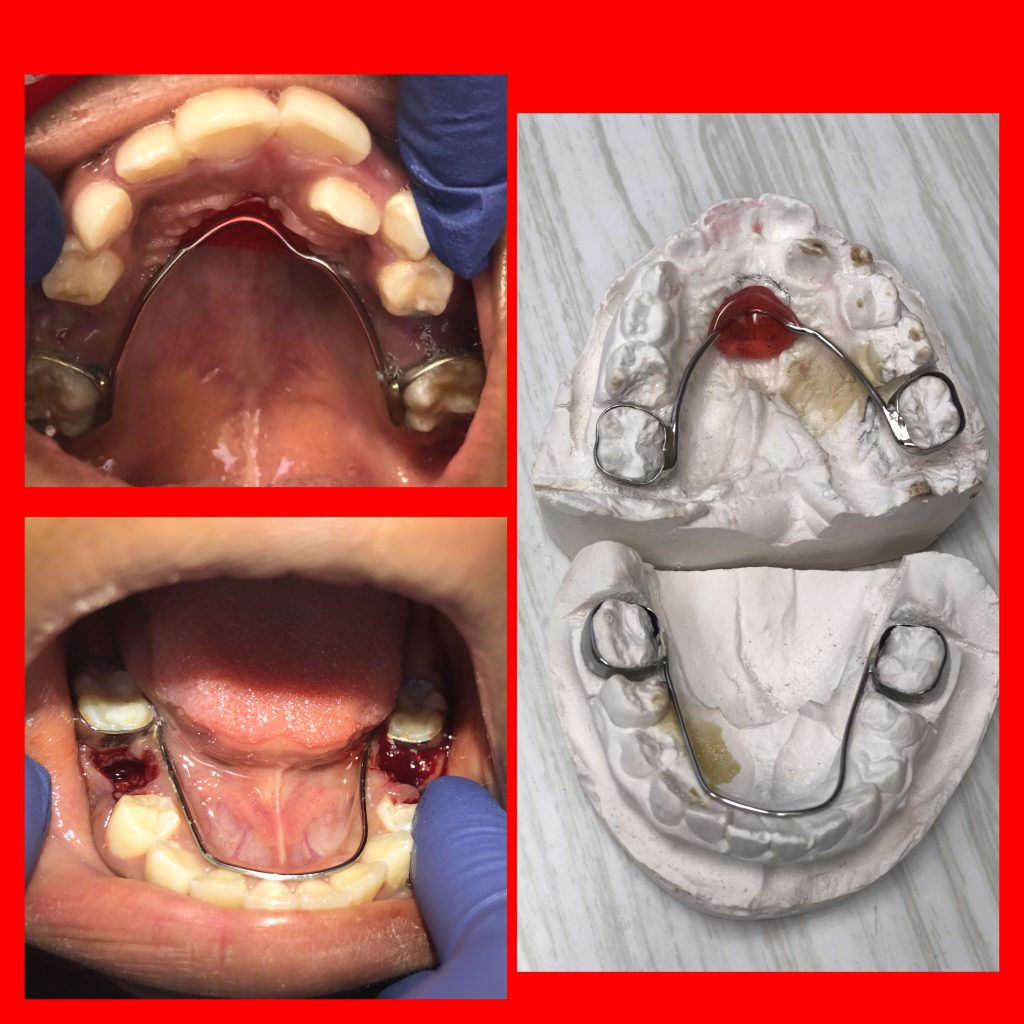
We specialize in early interceptive orthodontics. By catching things early and maintaining space we help create a better chance to maximize proper growth and development. We fabricate our own space maintainers and habit breakers. Dr. Kimmy is also an Invisalign provider.
SMART (Silver Modifies Atraumatic Restorative Technique)
What Is Silver Diamine Fluoride (SDF)?

Made only of fluoride, silver, ammonia, and wate; SDF is a painless liquid treatment for individual teeth. Placed directly onto a cavity, it will act quickly to help halt the spread of decay and prevent further damage to the tooth. It can also be used as a preventive measure against future cavities and it works well on reducing sensitivity on teeth
It’s important to keep in mind that SDF will blacken and discolor parts of the tooth (where the decay is). SDF treatment can be an easy and non-invasive way to delay tooth decay while your young child is still growing and devleoping
Ideal for Young and Special Needs Children
Because SDF is so easy to apply, it’s often recommended for very young children and/or for children with developmental disabilities. Unlike a standard cavity filling, SDF requires no anesthetic or drilling, making it perfect for children who have a hard time sitting still.
Here are a few of the main advantages to using silver diamine fluoride:
Kills the bacteria causing decay
Prevents cavities
Halts the spread of tooth decay
Easy and pain-free procedure
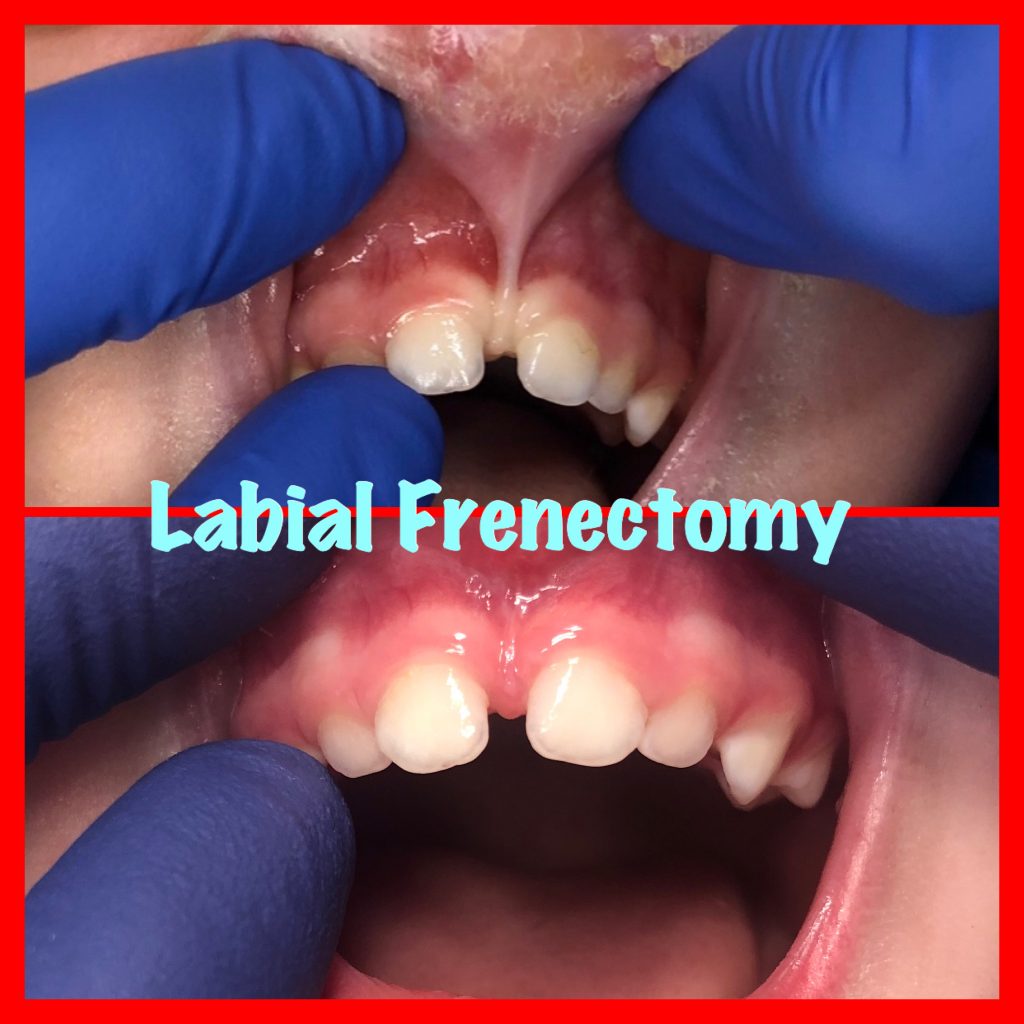
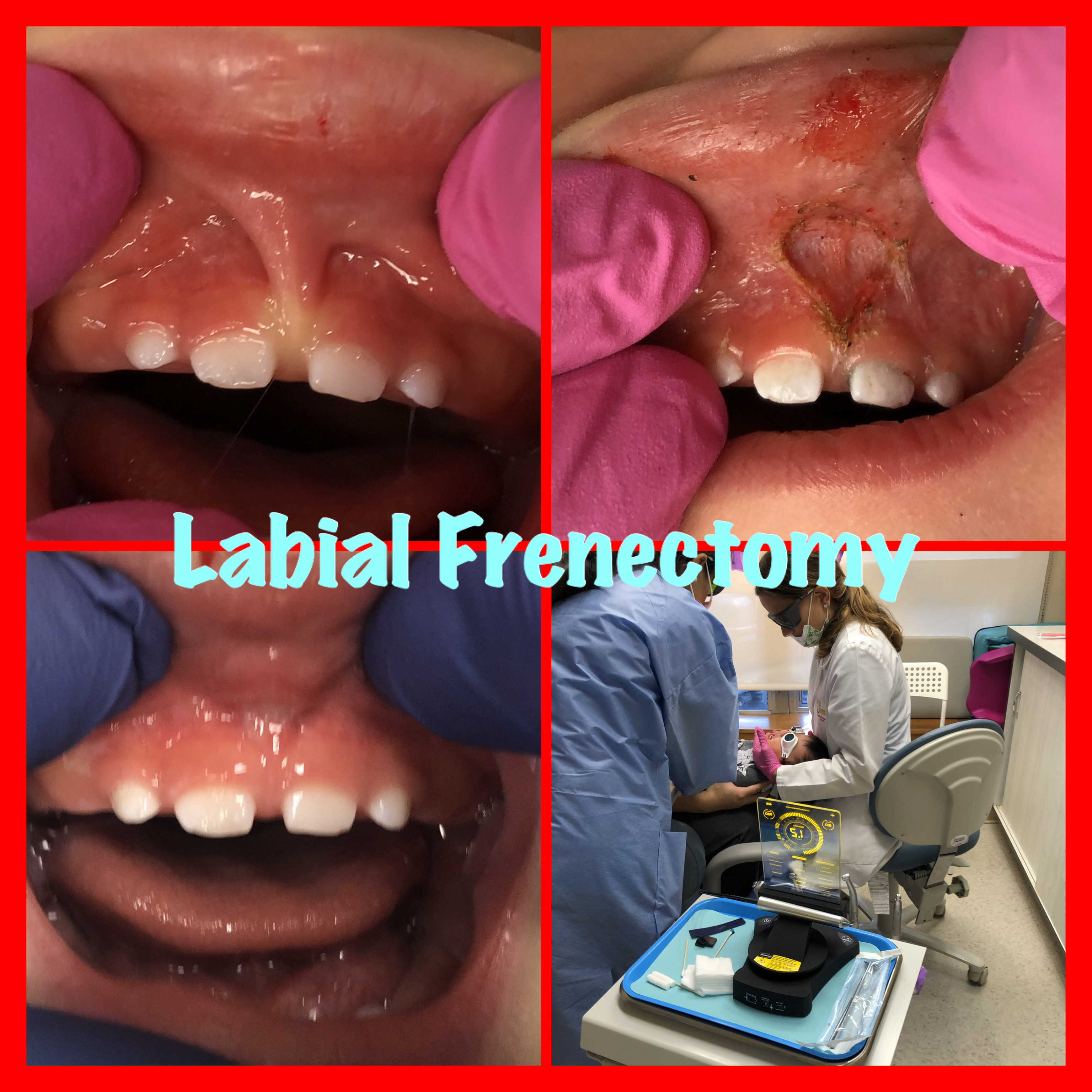
What is a tongue-tie or lip tie?
A tongue tied baby or lip tie is a common, but often overlooked condition that is seen at birth and can cause a wide range of difficulties that can affect the sufferer in many different ways if left untreated. The frenulum is a fibrous attachment that connects the tongue to the floor of the mouth and the lips to the gums. When the frenulum is too short, it can restrict the movement of the tongue and lips, and can interfere in normal swallow function, and overall dental and craniofacial development.
What are the signs or symptoms?
Typically a tongue-tie or a lip tie can be diagnosed as early as the first few days post birth. This is especially true when a poor nursing latch, or painful breastfeeding are involved. However, sometimes the signs are not so obvious, and other symptoms arise, including speech delays, sleep disordered breathing, or improper swallow.
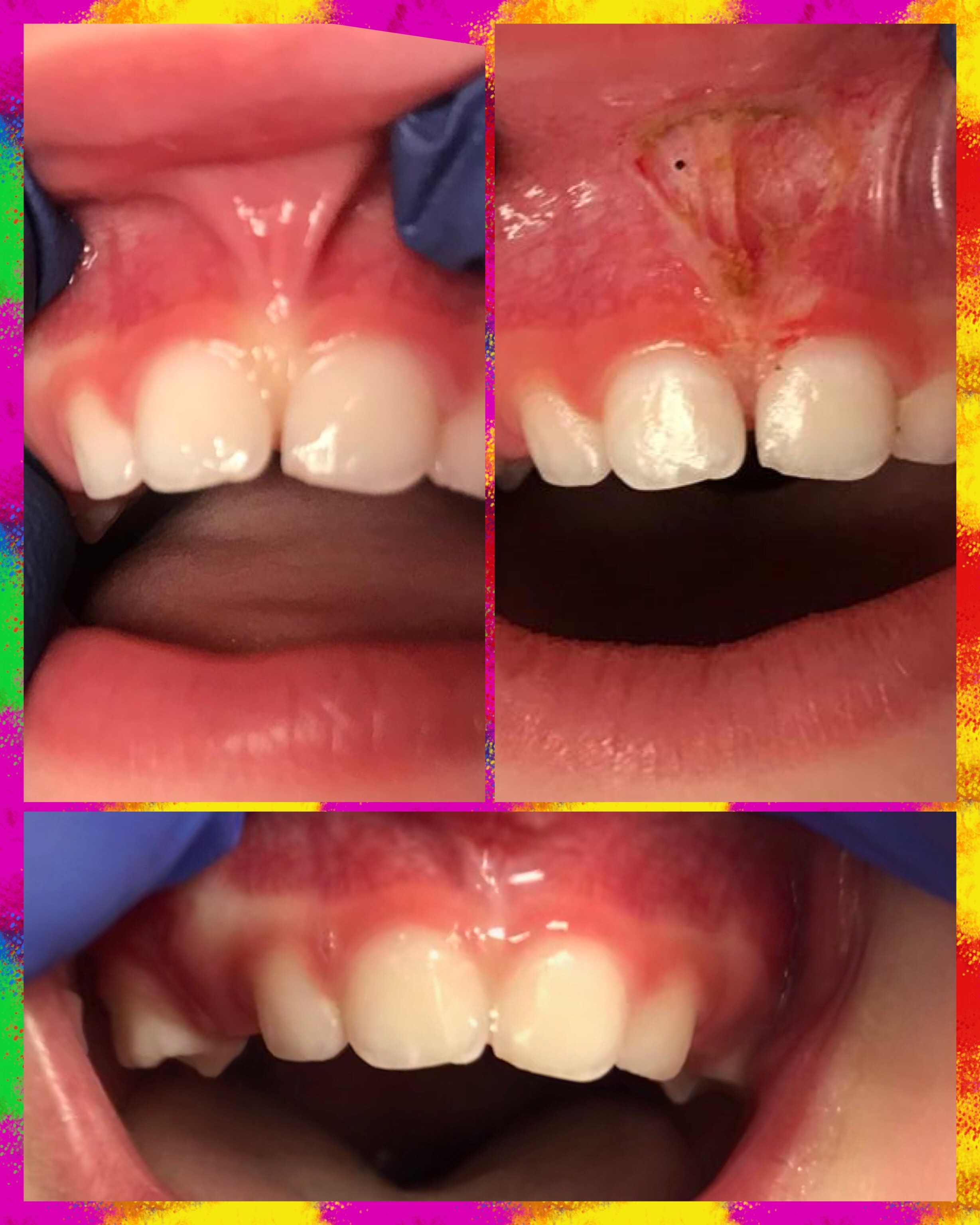
How is it treated?
At the office of Dr. Kimmy, your child’s health and wellbeing is our primary concern. By utilizing a Diode Laser, we can assure a quick and minimally invasive procedure, with nominal soft tissue damage and scar tissue. The Diode laser is used for the most intricate and delicate surgeries, and is the most gentle to the tissues when compared to other lasers and scalpels or blades. The procedure itself takes a matter of seconds, with minimal to no bleeding, and no sutures.
If you suspect that your baby or child is suffering from either a lip tie or tongue tie, please do not hesitate to call our office at 516-365-4-KID.